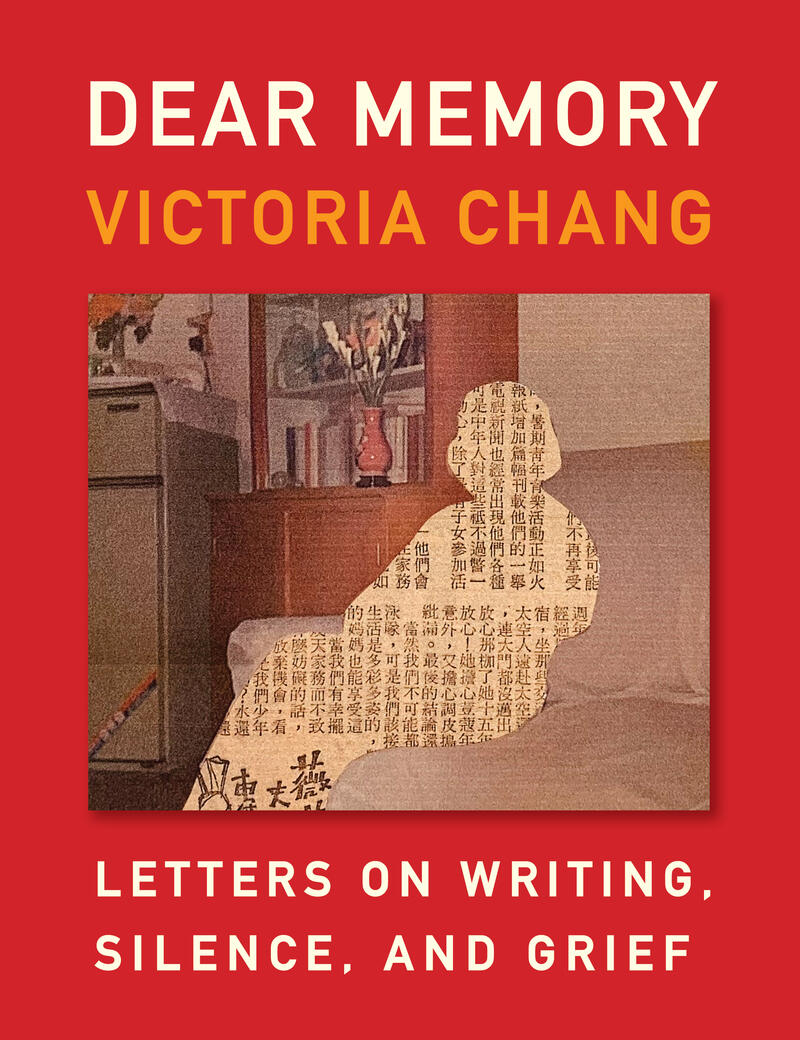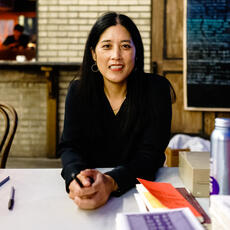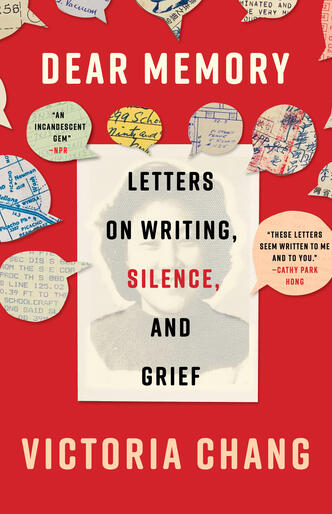Presence and Absence: A Cover Image Story

The cover for Dear Memory: Letters on Writing, Silence, and Grief, emerged organically, in the same way that this book emerged. After my mother died, there was the obvious grieving of my mother as body, as mind, as caretaker, but I was surprised to feel a greater sense of loss–a loss of not only her history but my own history. When she died, my connection to and with my family’s Chinese and Taiwanese culture evaporated. Because my mother tended toward secrets, I didn’t know much about her history, and never cared too much before about her background. So I was surprised at this additional layer of grieving which felt like being shoved into another secret chamber in a swimming pool where I was already drowning.
As I began to look through my mother’s boxes in storage, I began to find documents, birth certificates, photos, letters, diplomas, and all sorts of things because my mother was a pack rat. With each new object I found, I began to fill in my family’s history. I learned that my paternal grandfather had had a first wife and another daughter. I learned that some birth dates had been changed. I found old addresses in Taiwan and in various cities across America. I learned about relatives that were left behind in China during the war. But as information filled in, I felt emptier and emptier.
When Milkweed’s Art Director, Mary Austin Speaker, asked me about the cover for this book, because I am not a visual artist and don’t have strong feelings about book covers, I did my usual, “you make it.” But since the book has numerous visual elements that I made, she wanted to use one of those images as the cover. The cover art that Mary selected is a photo of my maternal grandmother’s sister who stayed in China and subsequently lived a difficult life, although I can’t be sure of any of these things. I razored out her image and used yellowed and old newspaper clippings my mother had kept, to fill her body in.
This book was truly a “process book” in that it formed as I was working on it, and it was a challenging process where I had to seek help along the way. One of my friends, the poet and visual artist, Monica Ong Reed was instrumental in guiding me through the visual elements when I needed the most help. I think her words most aptly describe the cover art image and all the art in the book: I was using negative space as a form of syntax as a way to articulate what’s missing. The visual art is a way to explore the tension between presence and absence.
The process of making this book was difficult and I nearly abandoned the whole thing numerous times. But in the end, I’m glad I stuck with it, even though I’m not exactly sure what this book is or what it’s doing. Perhaps it’s a window into my own process of discovery. I’m glad I didn’t abandon it because I learned so much along the way about myself and the process of making. In hindsight, perhaps this book is the process of filling in what can never be filled in. Perhaps along the way, I also discovered that absence is a kind of presence too.


